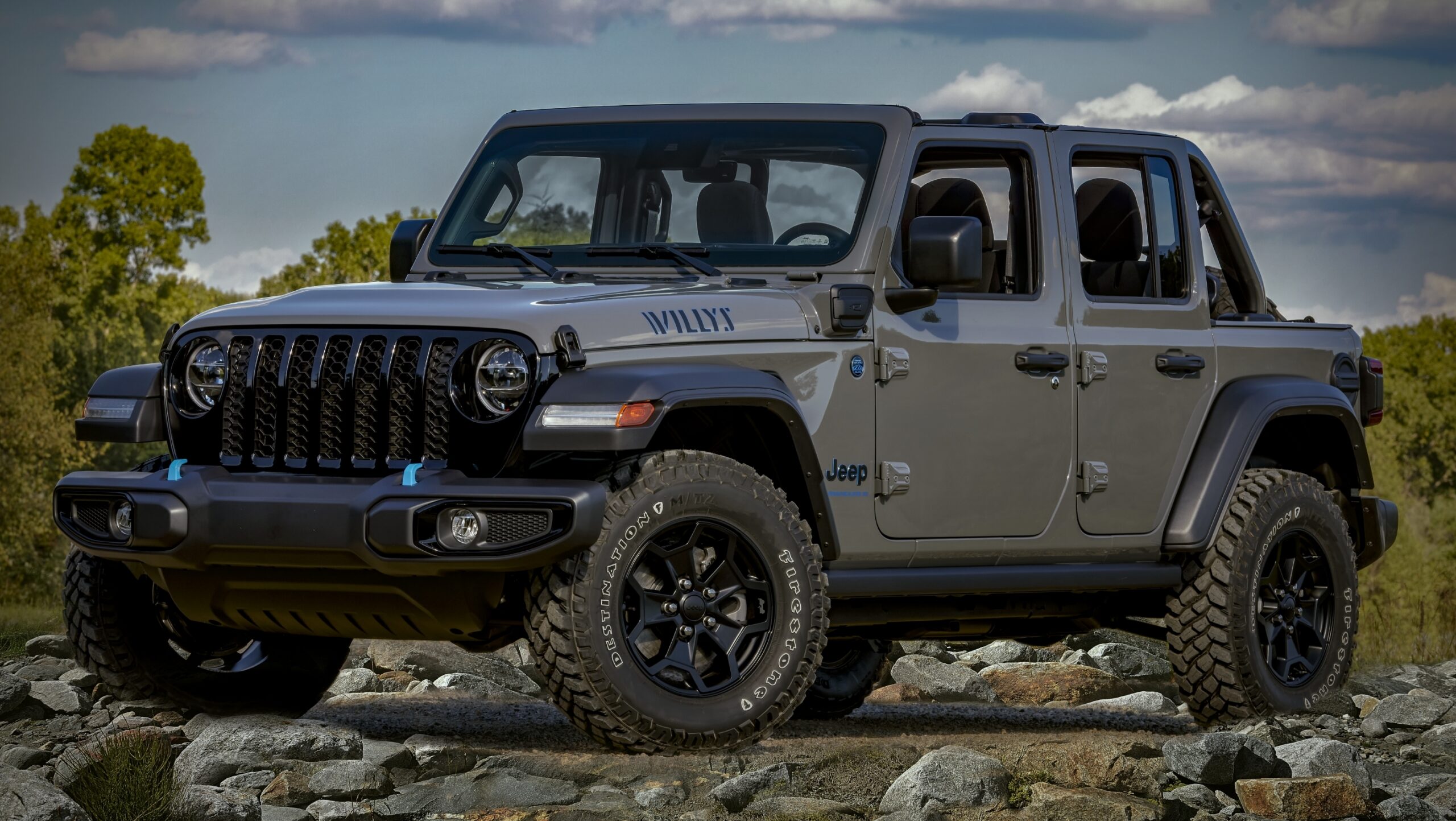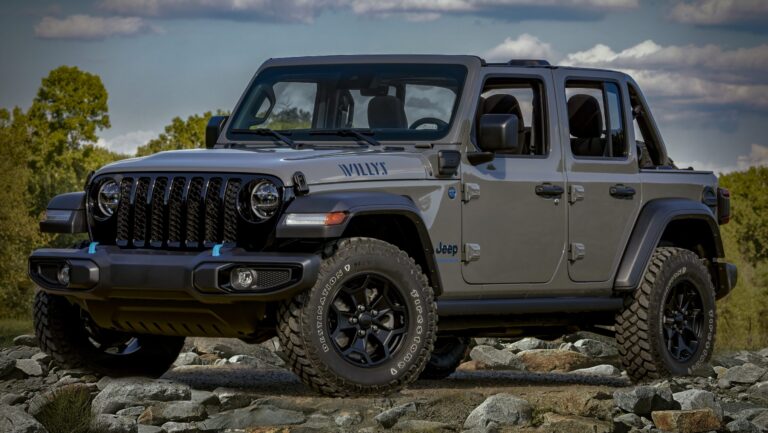Jeep Snorkels For Sale: Your Ultimate Guide to Off-Road Readiness
Jeep Snorkels For Sale: Your Ultimate Guide to Off-Road Readiness jeeps.truckstrend.com
For any serious off-roader, the sight of a Jeep with a snorkel immediately signals a vehicle prepared for adventure beyond the paved path. More than just an aesthetic upgrade, a Jeep snorkel is a critical piece of equipment designed to protect your engine and expand your vehicle’s capabilities in challenging environments. If you’re looking to push the boundaries of your off-road excursions, understanding the world of Jeep snorkels for sale is your first step towards unlocking new levels of exploration and peace of mind.
This comprehensive guide will delve into everything you need to know about Jeep snorkels, from their fundamental purpose and undeniable benefits to the various types available, key considerations for purchase, and practical advice for installation and use. Whether you’re a seasoned trail enthusiast or just beginning your off-road journey, preparing your Jeep with a high-quality snorkel can transform your vehicle into an even more formidable beast, ready to conquer water crossings, dusty trails, and everything in between.
Jeep Snorkels For Sale: Your Ultimate Guide to Off-Road Readiness
What Exactly is a Jeep Snorkel?
At its core, a Jeep snorkel is an aftermarket air intake system that repositions the engine’s air intake from its factory location (typically inside the fender or under the hood) to a much higher point, usually along the A-pillar or side of the windshield. This external pipe, often topped with a ram head or pre-filter, draws air from above the vehicle’s roofline.
The primary function of this elevated intake is to prevent water from entering the engine’s air intake system during deep water crossings. Should water reach the engine, it can lead to catastrophic "hydrolock," a condition where water, being incompressible, prevents the pistons from moving, causing severe damage to internal engine components like connecting rods, crankshafts, and cylinders. Beyond water, snorkels also offer significant benefits in dusty environments, drawing cleaner air from above the dust cloud generated by the vehicle, thereby extending air filter life and protecting the engine from abrasive particles.
Why You Need a Jeep Snorkel: Benefits Beyond the Obvious
Investing in a Jeep snorkel offers a multitude of advantages that go far beyond merely traversing streams:
- Engine Protection from Hydrolock: This is the most crucial benefit. By raising the air intake, a snorkel drastically reduces the risk of water entering your engine during water crossings, protecting it from costly and often irreparable damage.
- Superior Dust Filtration: In dry, dusty conditions – common in desert trails or even heavily used dirt roads – your engine breathes in vast amounts of particulate matter. A snorkel draws air from above the immediate dust cloud, providing cleaner, less contaminated air to your engine’s air filter. This extends the life of your air filter and, more importantly, reduces abrasive wear on internal engine components.
- Improved Air Quality for Engine Longevity: Cleaner air means less strain on your engine. By minimizing the intake of dirt, sand, and other debris, a snorkel contributes to the overall health and longevity of your engine, reducing the need for premature maintenance or repairs.
- Potential for Cooler, Denser Air: While not a primary design feature, drawing air from outside the hot engine bay can sometimes result in slightly cooler, denser air reaching the engine. Denser air can translate to marginally improved combustion efficiency and, consequently, a small boost in performance, though this effect is often minor compared to the protective benefits.
- Increased Off-Road Capability and Confidence: Knowing your engine is protected allows you to tackle more challenging trails and water obstacles with greater confidence. A snorkel can open up new routes and adventures that might otherwise be too risky for a stock vehicle.
- Enhanced Aesthetics: For many, the rugged, adventurous look of a snorkel is a desirable aesthetic upgrade, signaling a serious off-road build.

Types of Jeep Snorkels Available
When searching for Jeep snorkels for sale, you’ll encounter a variety of designs, materials, and applications tailored to different Jeep models and off-roading needs:
- Ram Head Snorkels: This is the most common type, featuring a forward-facing intake scoop (the "ram head") designed to force air into the system and prevent water ingress during rain. They are effective for general water crossings and dust.
- Cyclonic/Pre-Filter Snorkels: Ideal for extremely dusty environments (like desert racing or prolonged convoy driving), these snorkels incorporate a cyclonic pre-filter that spins the incoming air, separating heavier dust particles before they reach the main air filter. The collected dust is then expelled, significantly extending air filter life.
- Low-Mount vs. A-Pillar Mount: Most snorkels mount along the A-pillar and rise above the roofline. Some less common, lower-profile designs might integrate into the fender or cowl, offering a more discreet look but potentially less water-fording capability.
- Material:
- LLDPE (Linear Low-Density Polyethylene): The most popular material for aftermarket snorkels. It’s highly durable, UV-resistant, impact-resistant, and flexible enough to withstand trail abuse without cracking.
- Metal (Steel or Aluminum): Less common for general use, metal snorkels offer extreme durability and can be custom fabricated for unique builds. However, they are heavier, can be prone to corrosion (if not properly coated), and transmit more engine noise.
- Vehicle-Specific Applications: Snorkels are designed to fit specific Jeep models due to variations in fender lines, engine bays, and A-pillar configurations. You’ll find options specifically for Jeep Wrangler JK, JL, TJ, YJ, XJ Cherokee, Grand Cherokee, and even Gladiator models. Ensure the snorkel you purchase is designed for your exact Jeep year and model.
Key Considerations When Buying a Jeep Snorkel
Navigating the market for Jeep snorkels for sale requires careful thought to ensure you get the right product for your needs and vehicle:
- Vehicle Compatibility: This is paramount. Double-check that the snorkel is explicitly designed for your Jeep’s make, model, and year. A mismatch can lead to fitment issues, difficult installation, and compromised performance.
- Installation Difficulty & Requirements: Be aware that most snorkel installations involve cutting into the fender and/or cowl of your Jeep. This is not a reversible modification without bodywork. Consider your DIY skills; if you’re uncomfortable with precision cutting and sealing, professional installation is highly recommended.
- Material Quality and Durability: Opt for high-quality LLDPE from reputable manufacturers. This material ensures longevity, resistance to UV degradation (preventing fading and cracking), and resilience against trail impacts.
- Airflow Design and Engine Performance: A well-designed snorkel will not restrict airflow to your engine. Reputable brands engineer their snorkels to maintain optimal air intake, ensuring your engine breathes freely and performs as intended. Be wary of overly cheap or generic options that might compromise airflow.
- Aesthetics and Personal Preference: While functionality is key, the look of the snorkel matters to many owners. Consider how the snorkel will integrate with your Jeep’s overall aesthetic.
- Brand Reputation and Reviews: Stick to established brands known for quality and customer support (e.g., Safari Snorkel, ARB, Smittybilt, Rugged Ridge). Read reviews from other Jeep owners to gauge real-world performance and installation experiences.
- Budget: Prices for Jeep snorkels vary significantly based on brand, material, and vehicle specificity. Set a realistic budget, but don’t compromise on quality for a few dollars saved, as a failed snorkel can lead to catastrophic engine damage.
- Legality and Regulations: In most places, snorkels are perfectly legal for off-road use and even street driving. However, it’s always wise to check local vehicle modification laws if you have concerns.
Installation: What to Expect
Installing a Jeep snorkel is a moderately complex DIY project that typically takes several hours. Here’s a general overview of the steps involved:
- Preparation: Gather all necessary tools (drills, hole saws, files, silicone sealant, masking tape, measuring tape, markers, wrenches/sockets), and carefully read the instructions provided with your snorkel kit.
- Template and Marking: Most kits come with a template. You’ll position this template on your fender and/or cowl to mark the precise locations for cutting holes for the snorkel pipe and mounting bolts.
- Cutting: This is the most daunting step. Using a hole saw and/or jigsaw, you’ll cut the necessary openings in your Jeep’s body panels. Precision is crucial here.
- Connecting to Airbox: The snorkel pipe will connect to your existing airbox. This often involves some modification to the airbox itself, such as cutting an opening or adapting the existing intake.
- Sealing: This is arguably the most critical step. Every joint, connection, and opening must be meticulously sealed with high-quality silicone sealant to ensure an airtight and watertight system. Any leak can compromise the snorkel’s primary function.
- Mounting and Finishing: Secure the snorkel pipe and head to the A-pillar or fender using the provided brackets and hardware. Ensure everything is tight, secure, and properly aligned.
If you are not confident in your ability to perform these steps, especially the cutting and sealing, it is highly advisable to seek professional installation from an experienced off-road shop. A properly installed snorkel is a protective asset; a poorly installed one is a liability.
Practical Advice and Actionable Insights
- A Snorkel Isn’t a Submarine Kit: While a snorkel protects your engine’s air intake, remember that your Jeep has many other components vulnerable to water, such as differential breathers, transmission breathers, electrical systems, and cabin electronics. Always extend your differential and transmission breathers to a higher point (like under the hood) if you plan on serious water crossings.
- Scout Your Water Crossings: Never enter water without knowing its depth, the type of bottom (rocky, muddy, silty), and any hidden obstacles. Walk the crossing if possible.
- Maintain a Steady Speed: When crossing water, maintain a slow, steady speed to create a bow wave that pushes water away from your engine bay and allows the snorkel to draw clear air.
- Clean Your Snorkel Head: Periodically check and clean your snorkel head, especially after dusty trails, to ensure it’s not clogged.
- Invest in Quality: When it comes to something as vital as engine protection, don’t skimp on quality. Buy from reputable brands with a proven track record.
Jeep Snorkels For Sale: Estimated Price Guide
The price of a Jeep snorkel varies based on the Jeep model, brand, material, and features. Below is an estimated price range for complete snorkel kits.
| Jeep Model | Snorkel Type/Brand | Material | Estimated Price Range (USD) | Key Features |
|---|---|---|---|---|
| Wrangler JK (07-18) | Safari Snorkel, ARB, Smittybilt, Rugged Ridge | LLDPE | $350 – $600 | Robust design, UV stable, vehicle-specific fit, often includes template. |
| Wrangler JL (18+) | Safari Snorkel, ARB, Rugged Ridge | LLDPE | $400 – $700 | Modern styling, integrated fit, often requires less cutting than JK. |
| Wrangler TJ (97-06) | Safari Snorkel, Rugged Ridge | LLDPE | $300 – $550 | Classic design, durable, popular for older builds. |
| Cherokee XJ (84-01) | Generic, Specific Off-Road Brands | LLDPE | $250 – $450 | Cost-effective options, often require more custom fitting. |
| Gladiator JT (20+) | Safari Snorkel, ARB, Mopar | LLDPE | $400 – $750 | Designed for pickup configuration, robust for heavy use. |
| Universal/Custom | Generic brands, Fabricated | LLDPE/Metal | $200 – $600+ | Requires significant modification, often for highly customized builds. |
Note: Prices are estimates and can vary based on retailer, promotions, and specific kit components. Professional installation costs are extra and typically range from $200-$500.
Frequently Asked Questions (FAQ)
Q: Does installing a snorkel void my Jeep’s warranty?
A: Generally, no. Under the Magnuson-Moss Warranty Act, a manufacturer cannot void your entire warranty simply because you installed an aftermarket part. However, if a failure can be directly attributed to the snorkel (e.g., improper installation leading to engine damage), the specific part of the warranty related to that damage might be affected. It’s always best to check with your dealership.
Q: Will a snorkel affect my Jeep’s fuel economy or performance?
A: A properly designed and installed snorkel should have negligible impact on fuel economy or engine performance. Some might argue for a tiny gain in performance due to cooler, denser air, but this is usually imperceptible. Poorly designed snorkels or those with restricted airflow could theoretically impact performance, but reputable brands avoid this.
Q: Can I install a snorkel myself, or do I need professional help?
A: While it’s a popular DIY mod, installation involves precise cutting of body panels and meticulous sealing. If you’re not comfortable with these tasks or lack the necessary tools, professional installation is highly recommended to prevent costly errors and ensure the snorkel functions correctly.
Q: Do I need to re-tune my engine after installing a snorkel?
A: For most modern Jeeps, a snorkel alone does not necessitate an engine re-tune. The engine’s computer (ECU) can adapt to the minor changes in airflow. Re-tuning is typically only required if you make significant modifications to your entire intake or exhaust system, or if you’re chasing maximum performance.
Q: What about rain and snow? Will water get into my engine?
A: Reputable snorkel designs, especially those with ram heads, are engineered to prevent rain and snow from entering the air intake. The ram head’s design channels water away, and any small amounts of moisture are typically handled by the air filter before reaching the engine. However, cyclonic pre-filters are better for extremely wet and dusty conditions.
Conclusion
A Jeep snorkel is far more than just an accessory; it’s a strategic investment in your vehicle’s capability, longevity, and your confidence on the trail. By safeguarding your engine from the twin threats of water and dust, a high-quality snorkel transforms your Jeep into a more resilient and versatile off-road machine. When exploring Jeep snorkels for sale, prioritize quality, compatibility, and proper installation. With the right snorkel in place, your next adventure can lead you deeper into the wild, knowing your Jeep is truly ready for whatever challenges lie ahead.



